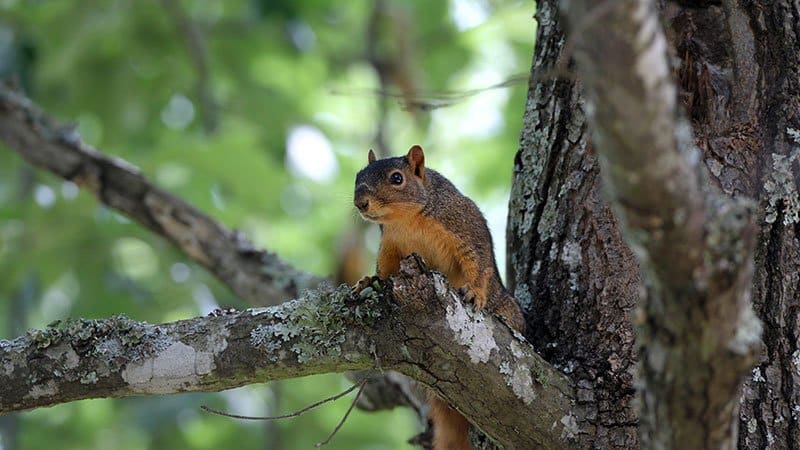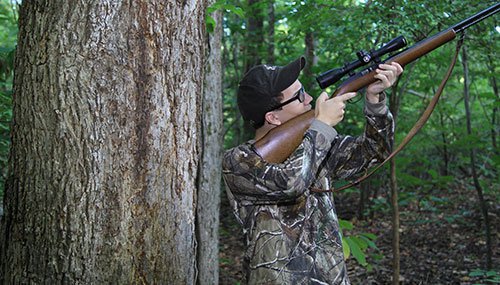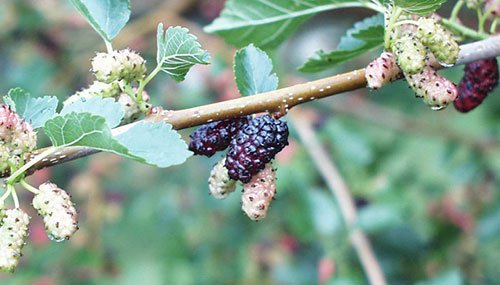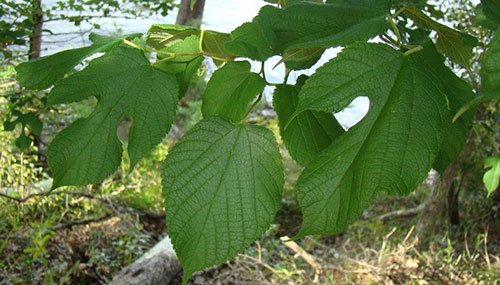Arkansas squirrel season opens May 15
ON 05-13-2020

May 13, 2020
Randy Zellers
Assistant Chief of Communications

LITTLE ROCK — With turkey hunting season wrapped up, deer and waterfowl hunting season may look like a million years away, but there’s another spring season that gives Arkansas hunters plenty of reasons to be excited. Arkansas’s squirrel season opens May 15, and for those who enjoy chasing these treetop targets, it’s a great excuse to be in the woods.
Spring squirrel hunting has been an Arkansas tradition for decades, and typically was available from mid-May through mid-June. In 2013 the Arkansas Game and Fish Commission voted to extend the season for those who wanted to continue pursuing squirrels from May 15 to the end of February, making it one of Arkansas’s longest hunting seasons.
Squirrel populations are largely dependent upon the previous year’s mast crop. When the acorns and hickory nuts are plentiful, squirrel populations will rise; but when hard mast is scarce, hunters may see declines in overall squirrel production. Following last fall’s explosion of hard mast throughout much of the state, squirrel populations should be seeing a healthy response and many young bushytails should be prowling the woods this spring. Add in the latest cooldown from Mother Nature, and this spring is shaping up to be one of the best prospects in recent years to break out a .22 rife or shotgun to chase these plentiful targets.
Fall season hunters have a few options when it comes to hunting styles: they can find a patch of hardwoods that are producing particularly well and sit a spell, or they can stay mobile and keep a sharp eye for the small animals as they make their way from tree to tree. Some hunters also opt to follow a trusty fiest or cur, dog breeds developed to watch and sniff out squirrels and lock them down to one tree until the hunter can catch up to take a shot. All of these tactics are excellent options, but in spring one outshines them all.

“Mulberries,” said Mark Hooks, regional wildlife supervisor for the Arkansas Game and Fish Commission’s Monticello Office. “Find mulberries in spring and you will find the squirrels.”
Just as a veteran squirrel hunter knows to focus on areas with abundant hickories and oaks during fall, a smart hunter will learn to identify the red mulberry tree as it is one of the best magnets for gray squirrels and fox squirrels this time of year.
“In fall, you’ll know when a squirrel has really been cutting hickories by the yellow stain on their chin,” Hooks said. “But if you can find a ripe red mulberry tree, you’ll see a bunch of squirrels with purple stains on their mouths and chest from the fruits of this tree.”
Former AGFC biologist and spring squirrel hunter Mike Widener used to joke about his recipe for spring squirrel success.
“Find a big mulberry tree with ripening fruit and camp out. Go no farther. Collect eight squirrels. Come back tomorrow,” Widner would say.
The only thing that has changed to that formula in the last decade is that squirrel hunters can now collect 12 bushytails as their daily limit.
Hooks says the key to identifying these magical mulberries is to focus on the leaves. Mulberry trees will have broad, pointed leaves that resemble a heart shape with a flat base. But the leaf also may have a depression in its margin that creates multiple lobes.

“The red mulberry leaf can be unlobed, have two lobes or multiple lobes all on the same tree,” Hooks said. “It’s one of our only trees that will have that. Another good giveaway is to break the leaf at its stem. Mulberry trees will have a white, milky sap at the stem you can see easily. That and the mulberries themselves that look similar to small blackberry fruits will help you find these trees when they are available.”
The main precautions for hunters looking to explore the spring squirrel woods are the same as those for turkey hunters. Ticks, gnats, mosquitoes and other biting insects can be waiting to hop aboard anyone who isn’t prepared. A good bug suit combined with insect repellent is the best route to take. If a bug suit seems too expensive or cumbersome, hunters may want to substitute for it by spraying their clothing with permethrin, an insecticide that will help deter some insects. But a good bug spray using the chemical compound DEET is almost a requirement to keep the bugs at bay.
With the exception of the bugs, the only real thing to worry about is caring for your squirrels once they’re harvested. Keeping the carcass cool is more of a factor than in cooler weather. Wearing a vest with a mesh game pouch like those used during dove season works well to offer air circulation around your squirrel. If that isn’t available, carrying your squirrels by hand or hanging them from a game tote like duck hunters use is a good alternative to keeping the meat fresh and ready for a pot of squirrel and dumplings when you get home.
Recent News

AGFC Commissioner Meeting Notice
Jul. 8, 2025

AGFC fish attractors unlock offshore fishing code
Jul. 8, 2025
Subscribe to Our Weekly Newsletter E-mails
Don’t miss another issue. Sign up now to receive the AGFC Wildlife Weekly Newsletter in your mailbox every Wednesday afternoon (Waterfowl Reports are published weekly during waterfowl season and periodically outside the season). Fishing Reports arrive on Thursdays. Fill in the following fields and hit submit. Thanks, and welcome!
